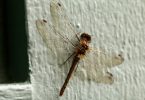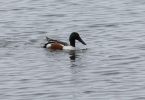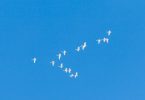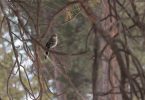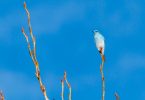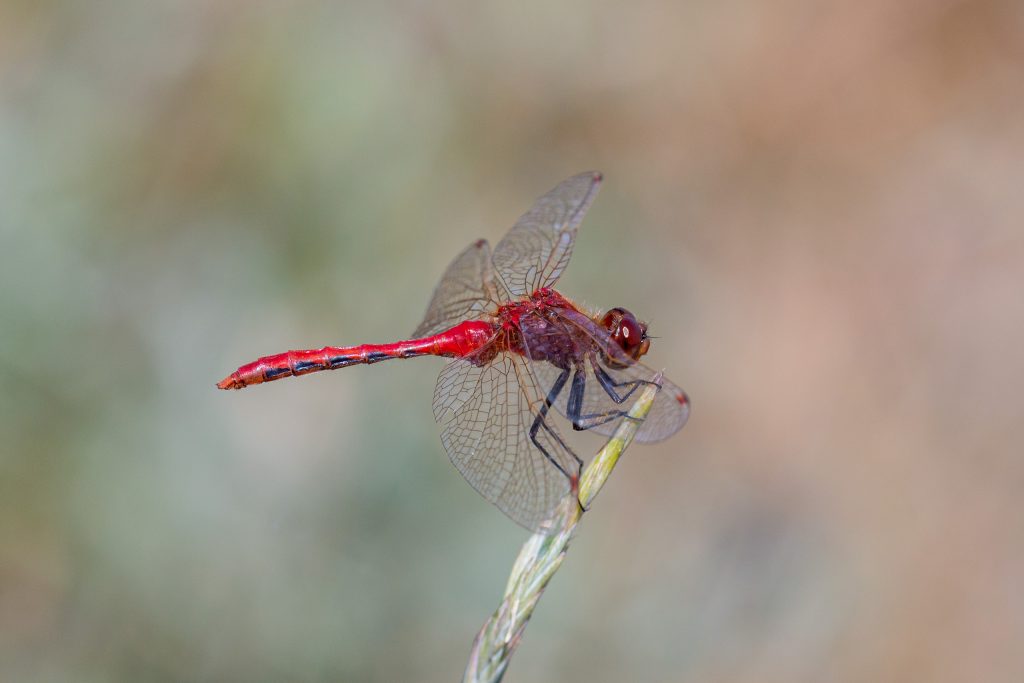
Summer season days are hot, especially the afternoon parts of the day, and are not really conducive for birding successes. Not so with dragonflies. They love hot, sunny summer weather; clouds actually minimize their activity. Why not dragonfly watch during these times instead?
Similar Body Parts
Scale is different with most dragonflies, most are under three inches in length. However, dragonflies do have similar colors and structures of birds: wings, abdomen, legs, eyes and face. Yes, the shape, number and function of these body parts are different. Birding terminology and descriptions, e.g. diagnostic field marks, still apply to this group of organisms as well…mirrors bird lingo. The Cherry-faced Meadowhawk posted above best described as having: six black legs, bright red abdomen with line of black triangles on the sides, dark red eyes, a reddish-brown face and perched horizontally. You would corroborate the description in mere seconds without having a topographical map of this insect. Easy right?
Devil in the Details
Knowing what to look at is easy. The field marks are small and that makes a difference. Plus, seeing diagnostic field marks well in not-the-best circumstances isn’t always attainable. Like birds, these animals aren’t going to strike a pose for you. And even if they do, distance, wind and light all play a part in seeing a dragonfly well.
Distance is not a problem if you can approach a dragonfly stealthily and from behind. Most times I get within six feet easy. Best Binocular Review notes that all close focus or butterfly binoculars will fill the frame with a butterfly (or dragonfly) at six feet.
Wind is a factor only if there is too much. Many dragonflies, especially Meadowhawk species, perch on grass stems that swing in most breezes. Obviously movement of your unknown dragonfly species is not favorable for identification success. Remain focused on observing critical field marks, usually not a total bust.
A backlit dragonfly is just like any other animal or object – dark in color. Sometimes this angle is not avoidable for a host of reasons. It is likely this is a temporary challenge. Dragonflies tend hunt regularly darting out to catch a small insect. They usually return to the same or closeby perch giving you a different look. Remain patient in this regard.
Slideshow Primer – Meadowhawk Species
Meadowhawk dragonflies are very distinct (red in color) and numerous near still water wetlands. Therefore, they are a good group to start looking at. They average between 1.2 and 1.6 inches (DuBois 2010). Small size negated with good pair of close focus binoculars. Focus your efforts on learning key field marks and gaining field experience. Review the fixed publication slideshow below of nine Meadowhawk species found commonly in the American West. This introduction is simplified showing only a male of each species with just four field marks to look at.
Advanced Study
I’ve developed a couple of comprehensive Web Stories that individually concentrate on and detail the identification of both sexes for Autumn Meadowhawk and Saffron-winged Meadowhawk. Identification practice photos included to build your skillset.


